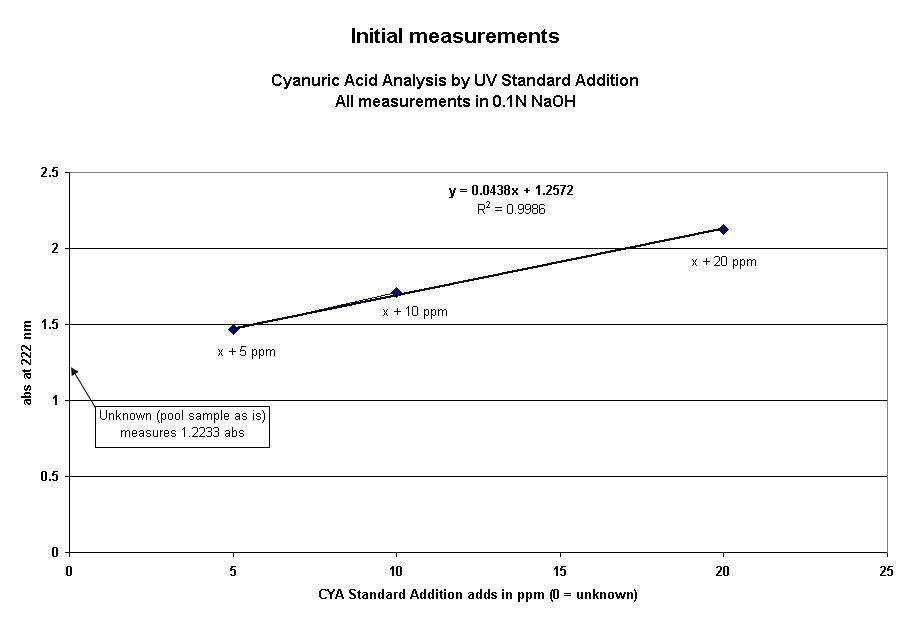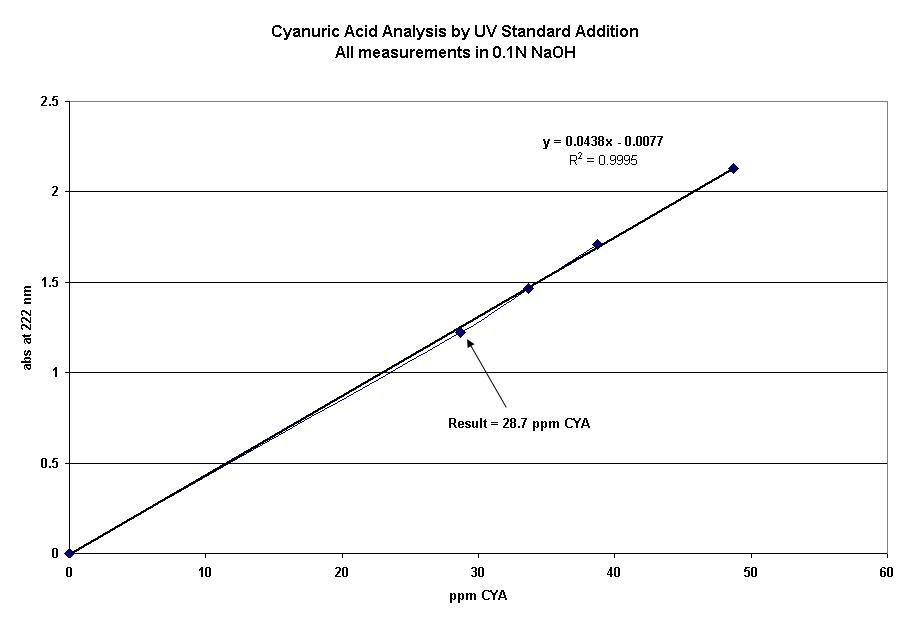I added CYA to new pool water but under-added on purpose to not overshoot.
I used the standard addition method to check CYA levels.
1) Make up 1000 ppm CYA standard
2) Add standard to 0.1 N NaOH for UV responsive tautomer form of CYA
3) Run UV response scan and note maximum wavelength abs (222 nm)
4) Make 4 samples from actual pool water. Add the required stock solution to get 5, 10, 20 ppm of additional CYA. One sample as is. Add NaOH to get 0.1 N in all samples.
5) Make 0.1 N NaOH blank.
Run the four samples and graph for slope-intercept.

Calculate x-intercept and re-graph. Add one more data point 0,0. R square is 0.9995.

Does this look right chem geek?
Thanks.
I used the standard addition method to check CYA levels.
1) Make up 1000 ppm CYA standard
2) Add standard to 0.1 N NaOH for UV responsive tautomer form of CYA
3) Run UV response scan and note maximum wavelength abs (222 nm)
4) Make 4 samples from actual pool water. Add the required stock solution to get 5, 10, 20 ppm of additional CYA. One sample as is. Add NaOH to get 0.1 N in all samples.
5) Make 0.1 N NaOH blank.
Run the four samples and graph for slope-intercept.

Calculate x-intercept and re-graph. Add one more data point 0,0. R square is 0.9995.

Does this look right chem geek?
Thanks.

